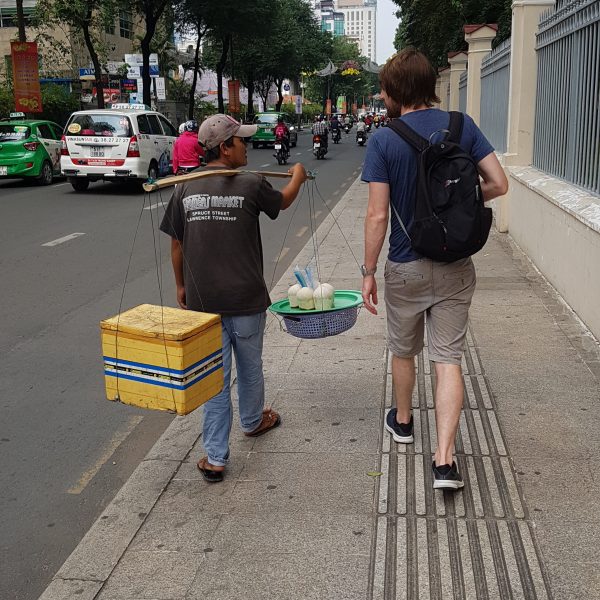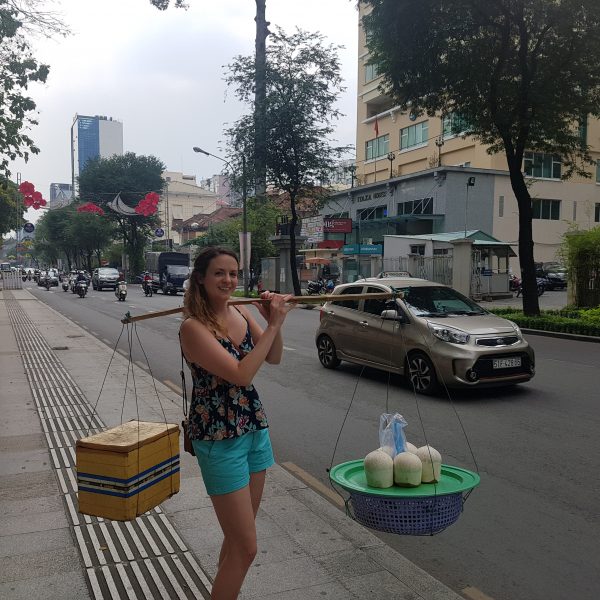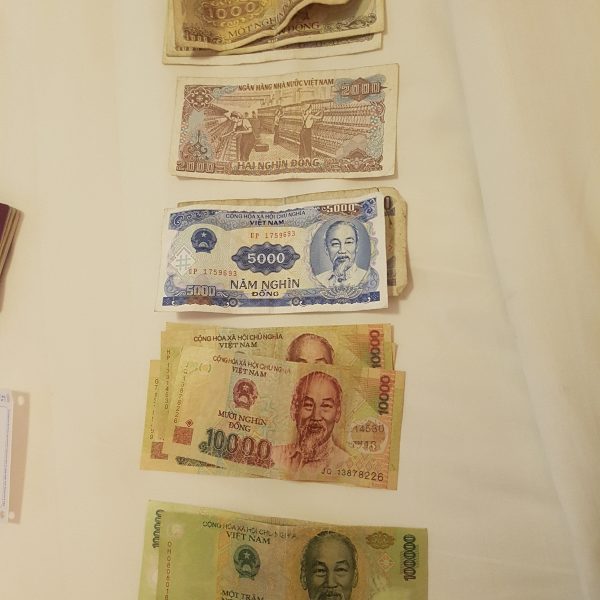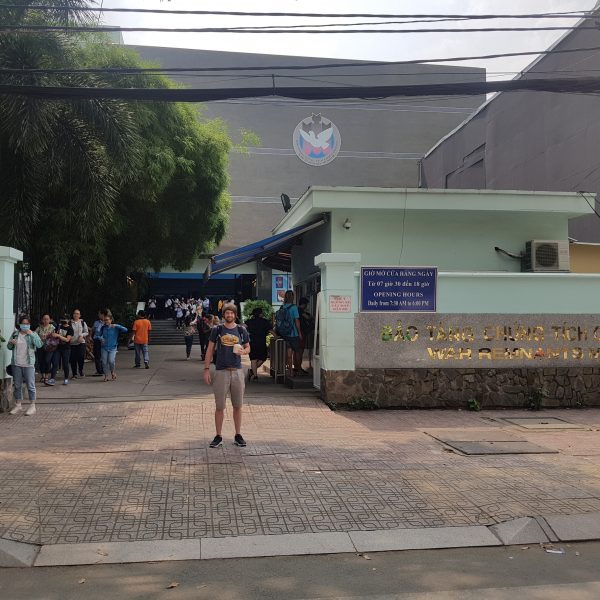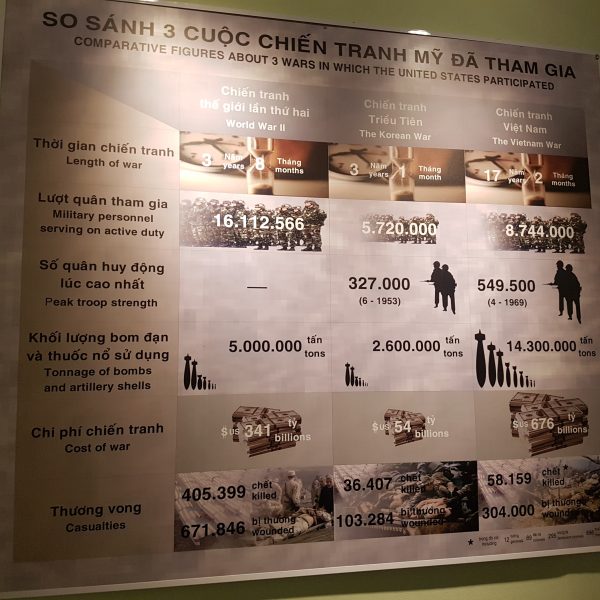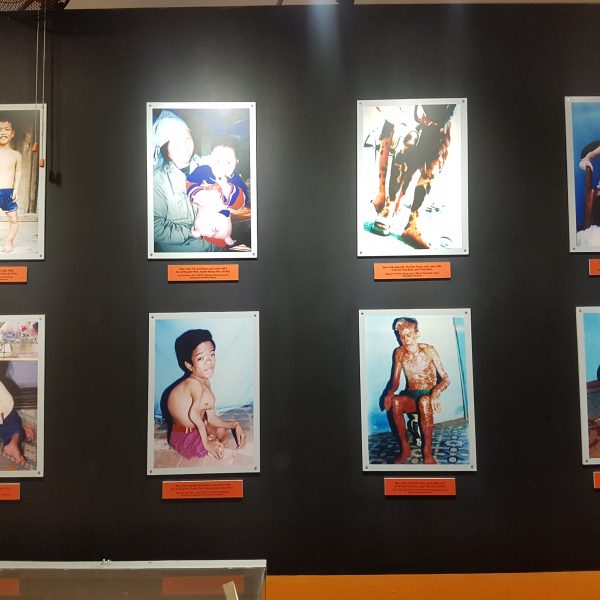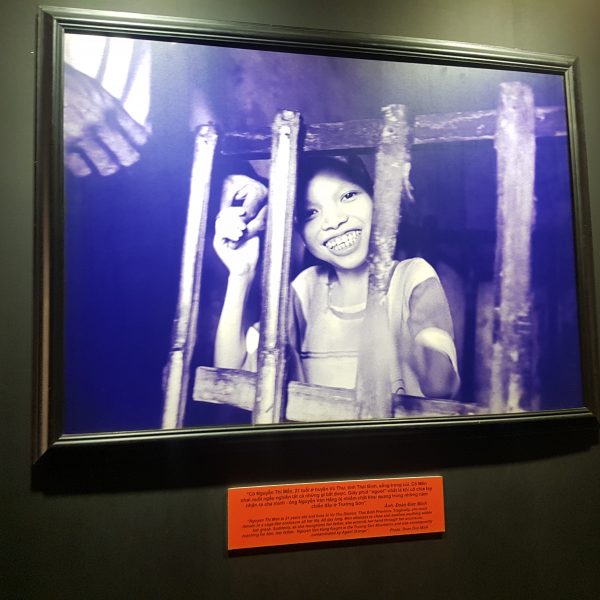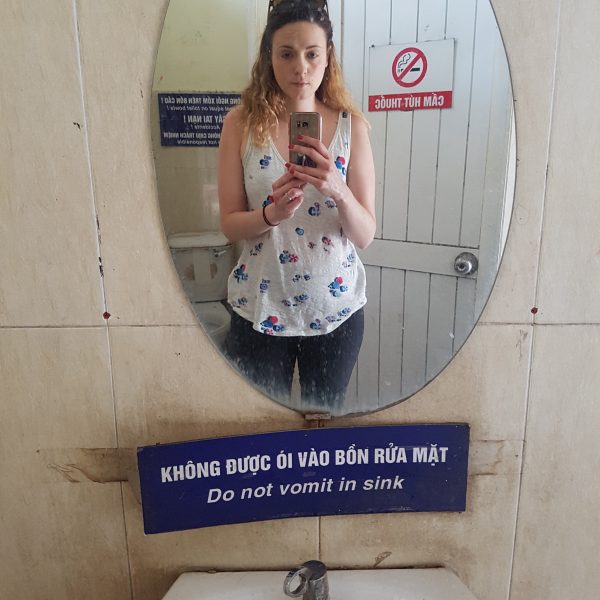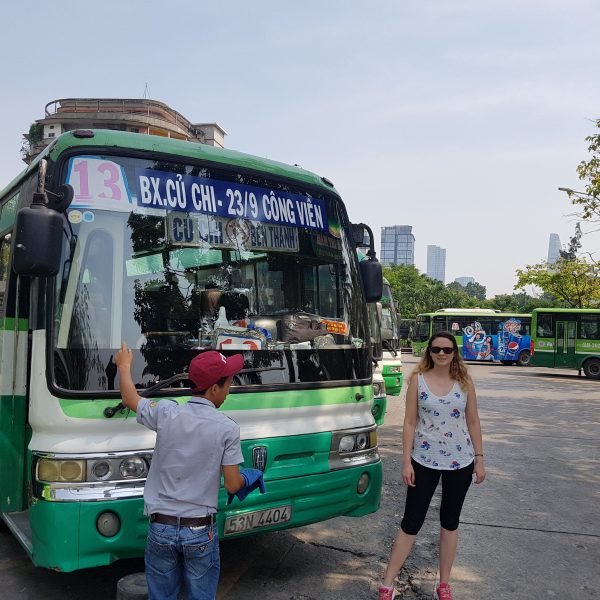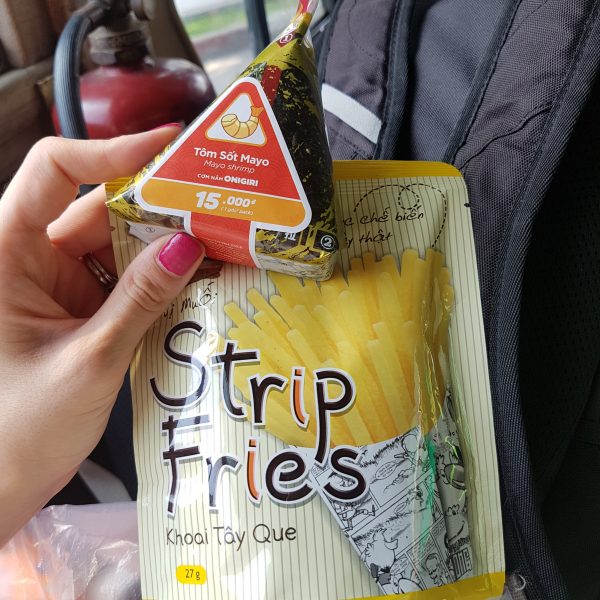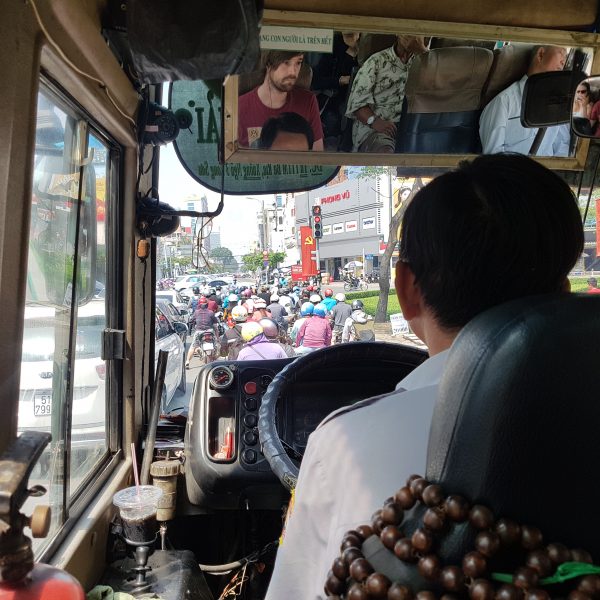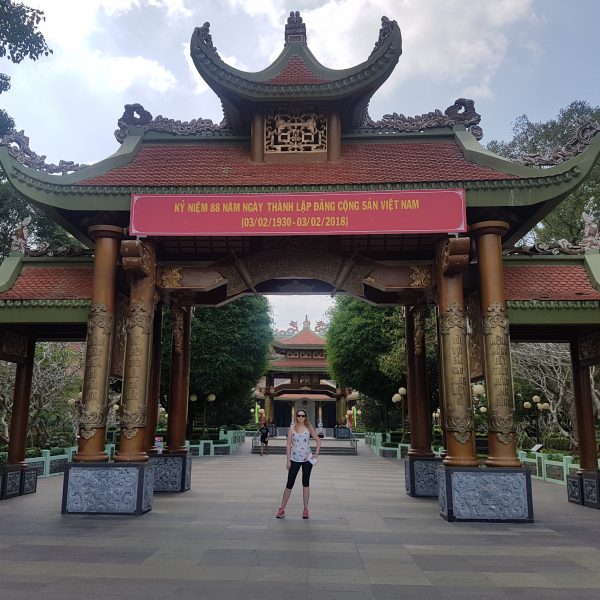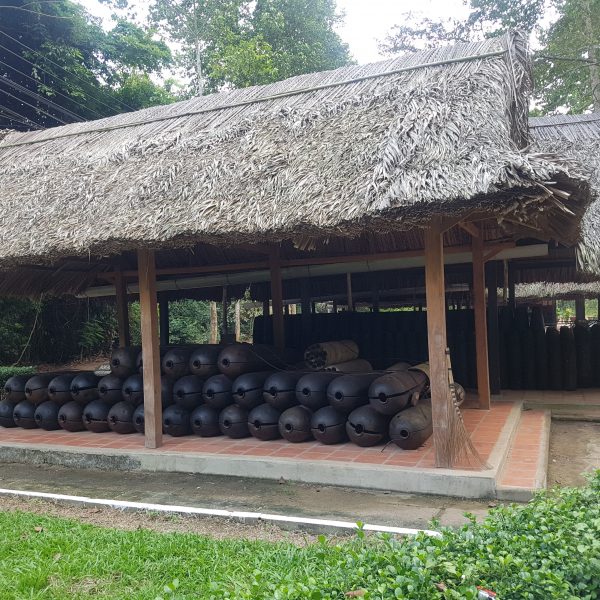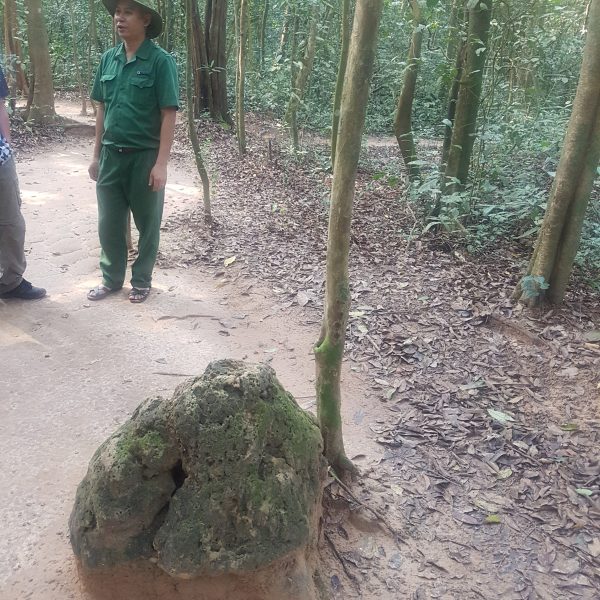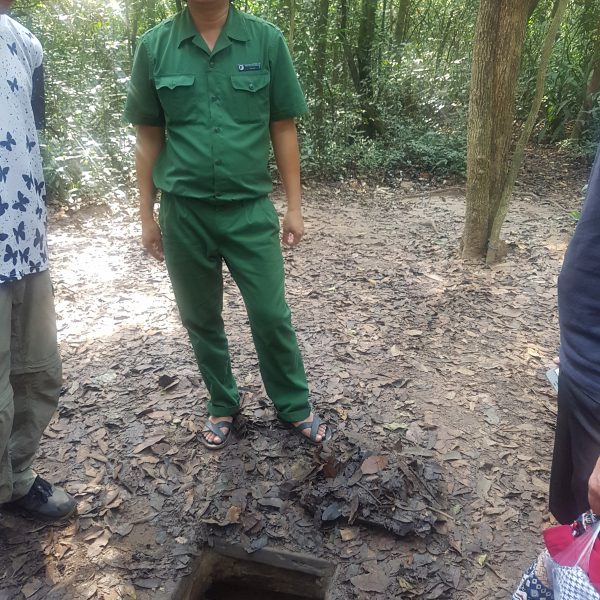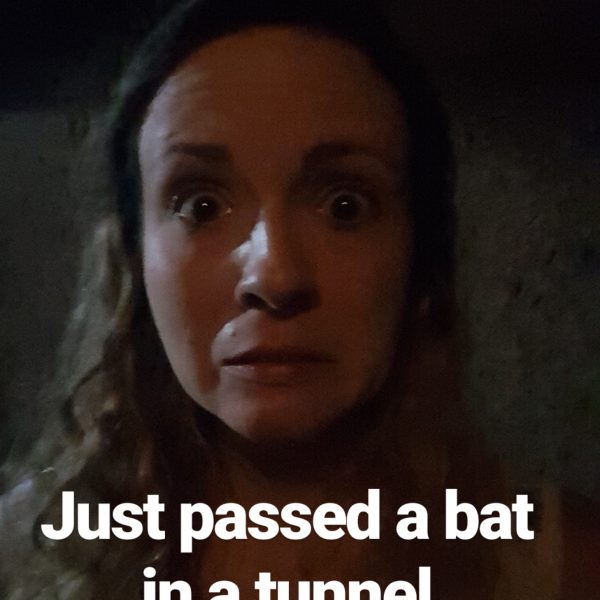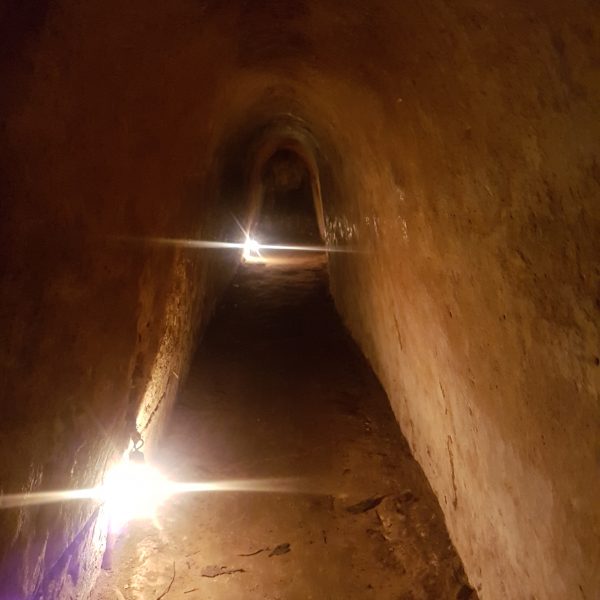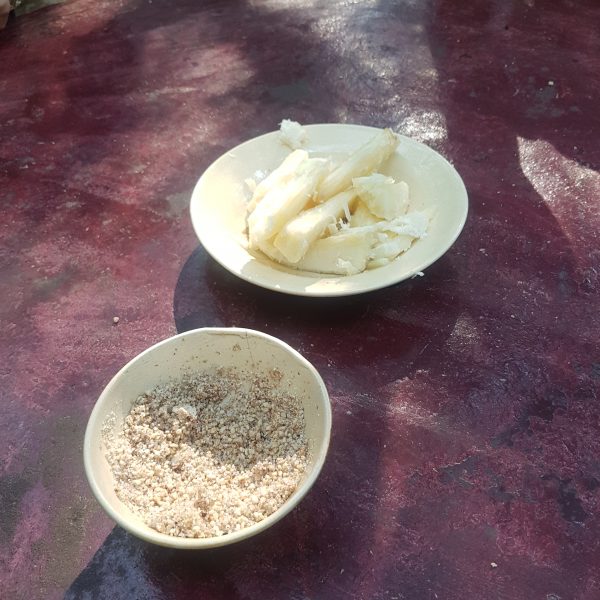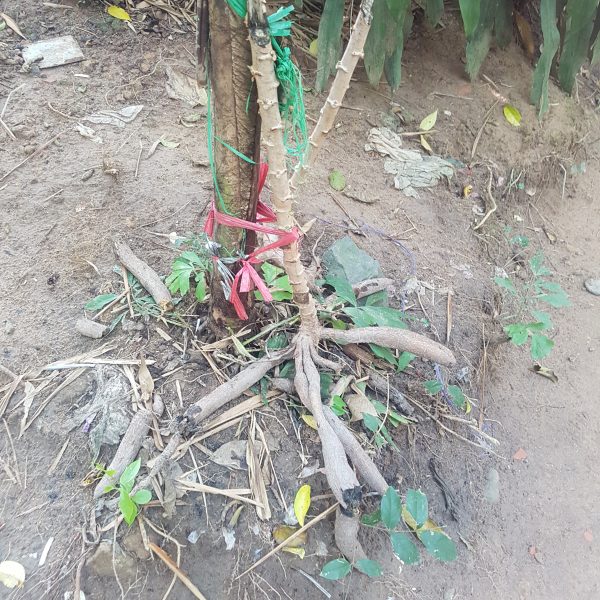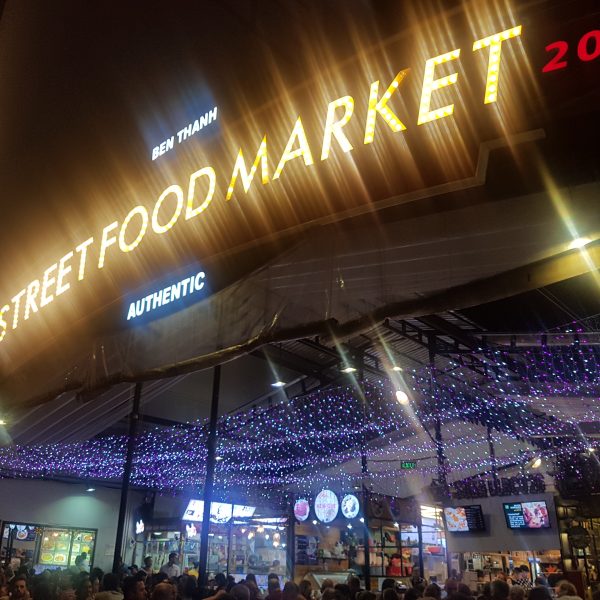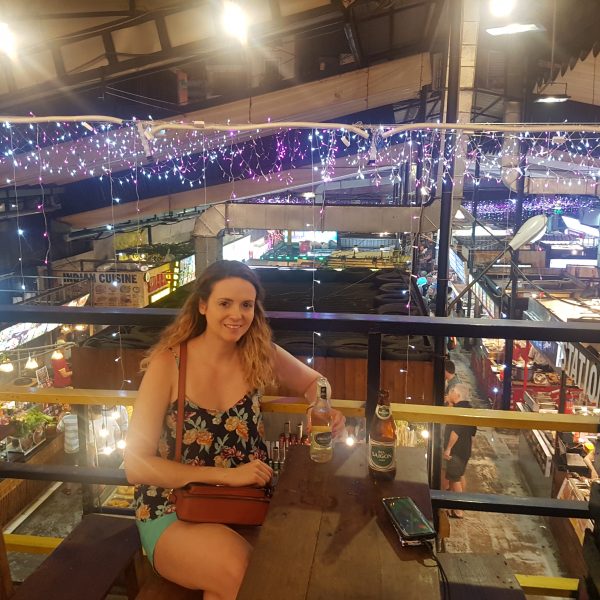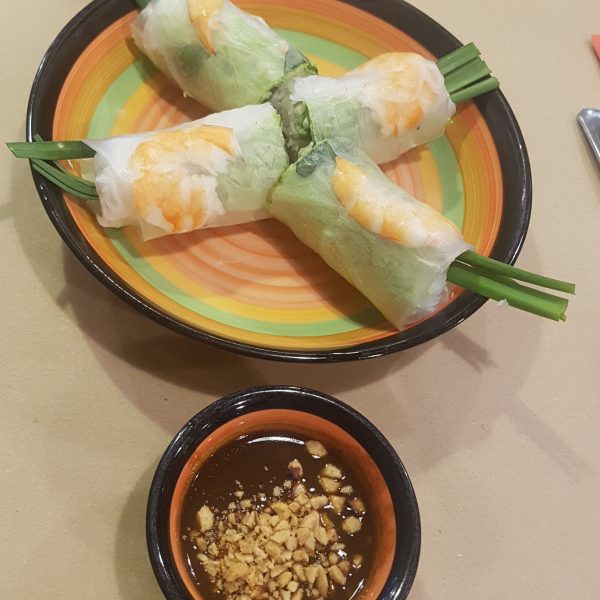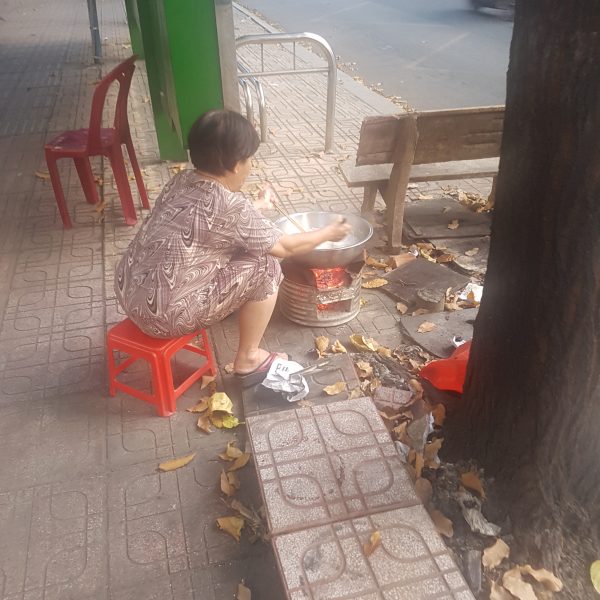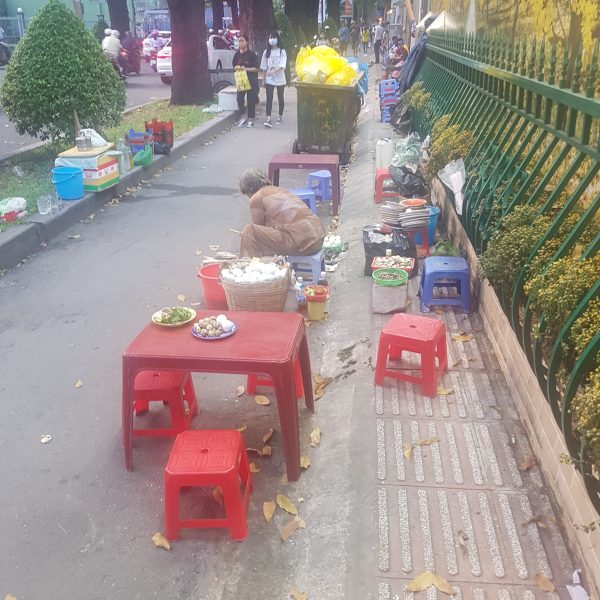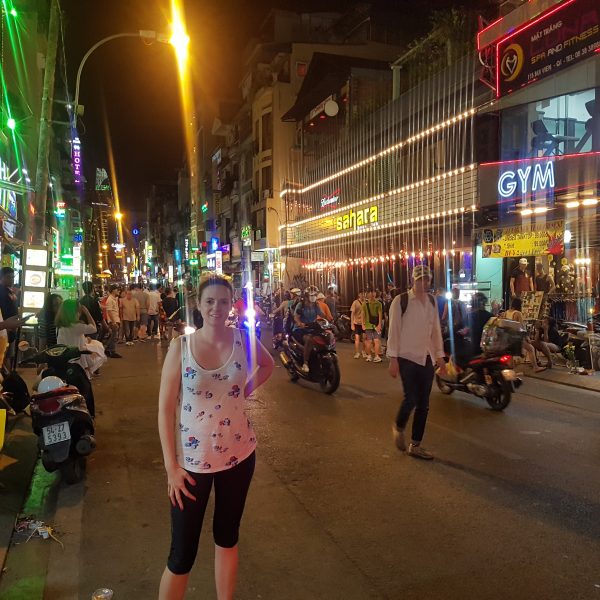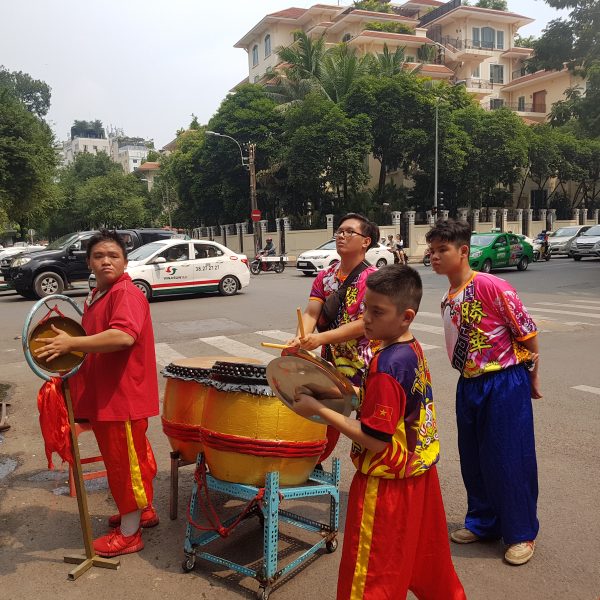Experiencing Vietnam at its most dizzying with a few days in Saigon.
Tuesday 30 January – Friday 2 February 2018
Accommodation: Happy Land Hotel booked on Hotels.com. US$113.40 for a double room for three nights including breakfast.
Vietnam at its most dizzying
Flying from Kuala Lumpur, we spent three nights in Ho Chi Minh City (HCMC), also known by its former name of Saigon. After experiencing HCMC for a few days, I appreciate Lonely Planet’s description of the city as ‘Vietnam at its most dizzying’, ‘A chaotic whirl…visitors cannot help but be hauled along for the ride.’ ‘Hectic’ is the word that I’d use to describe Saigon – not always enjoyable but definitely an experience!
There are 7.3 million motorbikes in Ho Chi Minh
HCMC is the largest city in Vietnam by population and the most popular mode of transport is motorbike. I can’t fully articulate the overwhelming number of scooters in HCMC and photos and videos didn’t do it justice. The population of HCMC is 8.3 million and there are an estimated 7.3 million scooters and bikes zipping about the city! A crazy people:scooter ratio! There are some pedestrian crossings around the city and it was amazing to watch the scooters pile back, way along the street when the light was red. Crossing roads without traffic lights felt like risking your life but my tactic of slowly shuffling across the road between lanes of traffic while screaming seemed to do the trick. After successfully crossing the road, thinking you’ve safely made it to the other side…you hear a beep behind you as people scoot along the pavements!
Trickery warning
Aside from the traffic, another word of warning that I would give to tourists visiting HCMC is to be on their guard as we found ourselves being scammed a few times. The currency of Vietnamese Dong is huge¬ (£1 = 30,266 VND) which is very confusing and some locals take advantage of this.
Our first experience of this was by a super friendly man carrying coconuts on a carrying pole. He chatted to us as we walked along the street and encouraged us to try carrying the pole…before selling us two hugely overpriced coconuts and, I think, also giving us the wrong change. I posted a photo on Instagram and another traveller said the same guy had tried the same thing with him so he must make a fortune from tourists! He was standing near the War Remnants Museum.
Our second scam attempt was when we went to a restaurant for Pho. After the coconut man, we were more alert by this point so I worked out the price before going up to the till to pay. The bill I was given was about double the expected cost. I queried it and she quickly changed it. Grrr.
Also, when we arrived at the airport I got a tourist sim card for the time we were in Vietnam. After a day or so, it seemed to stop working. Hmm. A side note about the airport – the arrivals section when you come out of the airport at HCMC is the busiest I have ever seen. There was a massive group of people seemingly waiting for people to come off flights.
Happy Land
Our hotel was in a pretty good location and we were able to walk to most places. It was a really nice room, if a bit old fashioned. One thing that I find very odd in hotel rooms is when the shower has a glass window to the bedroom -why!? The hotel room did have this but it was very frosted glass. A real benefit to the room (which I was amazed wasn’t mentioned in the reviews!) was the bedside lampshade which spun around!
Breakfast was included and was a random mix of rice, soup, French fries, eggs, noodles, fruit etc. Not a lot of vegetarian options but it was ok.
Exploring Saigon
The background and warnings out the way – what is there to do in Saigon? We only had two full days in HCMC, only one was actually spent in the city, and the majority of the second day was used to travel to the Củ Chi tunnels. Here’s what we achieved during our time there…
War Remnant Museum
Entry to the War Remnants Museum is 40,000 Vietnamese Dong. Currently that converts to £1.30 so quite reasonable considering we spent about three hours there. I’m not generally a huge fan of museums – I think I lack the imagination to bring very, very old things to life in my mind – but was completely fascinated by the War Remnants Museum in Ho Chi Minh City.
The whole museum is about the Vietnam War. I didn’t know much about this war before visiting and anything I did know was from the American point of view. I learnt so much at this museum and all from the Vietnamese point of view. Having grown up in ‘the West’, everything I have learnt is from the American side of things so it was very interesting to flip the point of view. The Americans really did not come across well at the museum and I think I would feel pretty awkward being there if I was from the States.
The War Remnants Museum is a series of exhibitions, set over four (I think?) floors. From the top floor, you work your way through the exhibitions, starting at the background of the triggers of the Vietnam War, and finishing outside where there are a few planes, helicopters and tanks.
The museum really brings the full horror of the war to life. I had no idea the scale of it. Stretching over 17 years (!!!) with 58,000 people killed. There was a display which compared the Vietnam War to other ‘great’ wars and I was surprised at how closely it measured up. Coming from the UK, our history classes in school never covered the Vietnam War.
I won’t go into detail of all of the exhibition’s but a few really stood out for me.
Firstly, the Agent Orange exhibition was shocking. During the war, the Americans used Agent Orange, a chemical (pesticide) and sprayed it over the land in Vietnam. The exhibition had photographs of people who have been affected by Agent Orange since this happened. The chemical has caused horrendous birth deformities and is now affecting the 4th generation of people.
Another exhibition was about the war photographers who worked during the Vietnam War. A well-known photo, ‘Napalm Girl’, of kids running naked down the street was on display, which has won the Pulitzer Prize and was ranked in the 100 most influential photos of the 20th century. It really shows that the real victims of wars are the innocent kids and civilians. The kids in the photo are so young and running terrified and crying.

Another photograph was of a family, again terrified and crying. The caption was from a war photographer. The family was about to be shot and he shouted for the soldiers to stop, took a photo and turned his back, hearing gunfire behind him. I know it is their job to capture and share the true horrors of the war but don’t understand how a photographer could stand back witness things like that. I recently learnt that a lot of war photographers commit suicide after they return from wars which doesn’t surprise me. It would take a very hardy soul to return unaffected.

The final exhibition inside the Museum slightly restored my faith in humanity. It was photographs of all the protests against the Vietnam War, which took place all over the world. There was a message from Vietnam to say thank you to all those people who stood with them in solidarity.
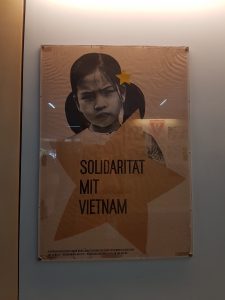
Củ Chi Tunnels
On our second day, our learning about the Vietnam War continued with a trip to the Củ Chi Tunnels.
“The tunnels of Củ Chi are an immense network of connecting underground tunnels located in the Củ Chi District of Ho Chi Minh City (Saigon), Vietnam, and are part of a much larger network of tunnels that underlie much of the country. The Củ Chi tunnels were the location of several military campaigns during the Vietnam War, and were the Viet Cong’s base of operations for the Tết Offensive in 1968.” (swiped from Wikipedia).

Our initial plan was to book a tour for this but we left it too last minute so decided we would try to get to the tunnels ourselves. Although this option took longer, there are a few advantages of getting to the tunnels yourself. Firstly, it’s slightly cheaper – instead of £6, we paid about 40p each. By avoiding the organised tours, we avoided being herded to mandatory stops en route where you would be sold things. The main advantage though is that you will visit the much quieter, less touristy section of the tunnels.
There are two sections of Củ Chi Tunnels – Ben Dinh (33km from HCMC) and Ben Duoc (40km from HCMC). If you go with a tour, you will go to Ben Dinh and if you go by public transport, you will go to Ben Duoc. Although Ben Dinh is more convenient to reach, it is apparently the less authentic section with tunnels that have been widened for tourists.
Following the instructions from Kerri (Beer and Croissants blog), we walked to the bus station and got two buses to the Ben Duoc section, which took about three hours in total. During the time we were there we only saw about 10 other tourists which I imagine is a very different experience to Ben Dinh. This did make it a little unclear of where to go but we eventually found the ticket desk, paid 90,000 VND (£3ish) each and walked to the entrance, via the Ben Duoc temple (built in memory of the Vietnamese killed at Củ Chi).
Our tickets were checked at the entrance and we were asked to sit in a forest area until the tour started. Don’t forget your mosquito repellent! A man led our small tour group deeper into the forest and we stopped at a hut to watch a film about the War. The film was pretty ridiculous and bad quality. To summarise, the Vietnamese were minding their own business, working in the fields when “like a crazy bunch of devils, the Americans came”!
After the completely unbiased video explaining the War, our guide walked us further into the forest, pointing out an air vent for the tunnels, which was disguised as a termite mound. We soon came across the first tunnel with a tiny entrance. So tiny, that I was quite surprised when he asked who was going to go down first! Feet first into the tunnel, you had to put your arms above your head and then walk down a step to get in. Once inside, there’s a tunnel which you could stoop down to walk through. It was about 10 meters long and I hurried through. David had gone before me and asked if I saw the bat just by the exit – eek, no!!
I think in total there are four tunnels, each one getting longer and lower. I was properly freaked out by the last one, which had turns in the tunnel so you couldn’t see the end as you crawled through. By this one, I scrambled along on my hands and knees trying to get out as fast as possible. Emerging muddy, hot and sweaty, I was about to say no more tunnels for me but luckily it was the last one. How people could spend more than a few seconds in those tunnels is beyond me – especially with the bats and apparently frogs down there!!
After the tunnels, our guide led us to a table where we could try a tunnel delicacy of boiled cassava, a root vegetable. It had the texture of potatoey rope and tasted of nothing. You could dip it into a mixture of sugar and salt. Between this and the bats, I wouldn’t have lasted very long in the tunnels!
We walked back to the bus stop and caught the bus back to Ho Chi Minh City. When we swapped buses at Củ Chi Bus Station, there was an elderly Vietnamese woman carrying a heavy sack from one bus to another so I helped her by carrying it to her next bus. I don’t think she spoke English but when we got to the bus, she turned to me and took my hands and said ‘thank you’. Very sweet.
Street Food Market
The Street Food Market was very close to our hotel so we took a walk there for dinner and drinks one night. After a wander around the stalls, we didn’t find much vegetarian friendly so ended up walking around the corner to a place which sold tasty Vietnamese fresh spring rolls and pancakes instead.
Real street food
All over HCMC, there’s more real street food options (as opposed to the ‘Street Food Market’) where people have set up themselves up with a little kitchen and chairs for people to sit and cook what they make. All over Southeast Asia I was constantly impressed by how hard working street sellers are. It can’t be an easy shift, setting yourself up beside the road and selling food. I didn’t try any of the food and expect there’s not many vege options but I’m sure there’s some tasty treats to be found.
Bui Vien Backpacker Street
Someone recommended Bui Vien Backpacker Street to us. It was quite close to the bus station so we walked there for a drink after we got off the bus from Củ Chi Tunnels. (Watch out for the giant rats at the bus station at night by the way!!) There are bars all along the street with tables and seats pointed towards the road, which was good for people watching, which I enjoy. However, I’d say it was the least relaxing drink I’ve ever had! Despite being a walking street, cars and scooters use the street so it is quite noisy. Also, there is a constant stream of people stopping by your table to try to sell things to you, from cigarettes to sunglasses.
A manic city
We spent three nights in HCMC and, with the trip to the Củ Chi Tunnels, we only really had a day to explore the city. In all honestly, after that length of time, I was quite happy to leave. I’m glad we visited – our trip was hugely educational and interesting and I learnt so much about the Vietnam War. However, the city is so manic and full on that I don’t think I could handle more than a few days there. Overall, definitely not one of my favourite places to visit but well worth a brief trip to experience ‘Vietnam at its most dizzying’ and learn some history.





